#Edinburgh Napier University
Explore tagged Tumblr posts
Text






Merchiston Tower.
Also known as Merchiston Castle, has stood in the area since the mid 1400s. The castle, and the land surrounding it, belonged to Alexander Napier, a landowner and Provost of Edinburgh who gave the Napier University the was John Napier, the 8th Laird of Merchiston and the inventor of logarithms, he was born there in 1550.
Although it was originally intended as a country house for the family, the political turbulence of the 16th century meant that it soon had a more strategic purpose, with some walls as much as six feet thick – and it was frequently under siege. During restoration in the 1960s, a 26-pound cannonball was found embedded in the Tower, thought to date from the struggle in 1572 between Mary, Queen of Scots, and supporters of her son, James VI.
These days, the L-shaped tower forms the heart of Napier’s Merchiston campus which is home to the creative, computing and engineering students.
I wouldn't mind a wee look inside where there is a painted ceiling which dates back to 1581. The painting had originally been part of the ceiling at Prestongrange House until the Ministry of Public Buildings and Works and the National Trust had it removed and preserved. The artwork is grotesque - and no, that’s not a judgement on its artistic merit. ‘Grotesque’ means ‘of the Grotto’, inspired by the extravagant ancient Roman decorative art that was discovered at the end of the fifteenth century and then enjoyed a revival as a popular style across Europe. It’s likely that this example was done by a foreign painter, although it’s unclear who that might be.
Tours can be arranged to see the interior, maybe I need to enquire how to go about it.
42 notes
·
View notes
Text
DT talk throwback: my interview w/Steve Pang, writer/director/producer of SPACES
This post is the second in the series of posts I'm making to rescue my lost interviews with people who worked with David in his earlier years: you can find the first, with David Blair - the director of Takin' Over The Asylum - right here.
Over half a decade ago now I was a writer for David Tennant News/DT Forum, one of the bigger unofficial fan sites of DT's at the time (now sadly defunct). During my time there, I got the chance in July 2015 to interview Steve Pang - the writer/director/producer of SPACES, a short film David starred in back in 1993. I didn't want this interview to sink into the depths of the Wayback Machine and I thought y'all might enjoy reading it, so here is that interview in its entirety (and if you'd like to see it in its original form, click here.)


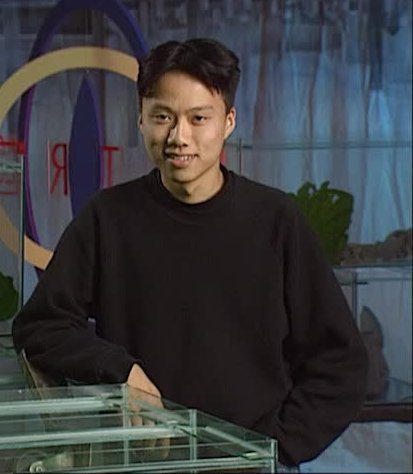
Screenshot of SPACES from Moving Image Archive / Steve Pang, Writer-Director-Producer (today, and in a 1993 interview)
--
Recently I was able to chat with Steve Pang, the writer, director and editor of SPACES. SPACES is a 1993 short film starring David Tennant as Vinny, a young man working a night shift in a car park in Edinburgh. The film depicts the characters Vinny meets over the course of the night: an older colleague with a troubled past, a bright young girl who uses the empty car park for her violin practice, and a young homeless boy.
Pang won a First Reels funding Award in 1993 from the Scottish Film Council and Scottish Television for the script he submitted for SPACES. First Reels was “a joint short film initiative from Scottish Screen (and its predecessor body the Scottish Film Council) and Scottish Television that was launched during 1991 by the Scottish Film Council in response to a perceived need for small grants to help young and first time film-makers to make or complete their first film or video project.”
Winning the award gave Pang the funds to make SPACES a reality. In the following years he decided to shift gears and move into film and television editing. He began in film as an assistant editor in the 1997 James Bond film Tomorrow Never Dies and on television in The Vicar of Dibley. Since then he has worked in various editing capacities on a lengthy list of projects including Wonka, Band of Brothers, The Da Vinci Code, Lord of the Rings: The Return of the King, The Hitchhiker’s Guide to the Galaxy, The 10th Kingdom, and Gravity.
How did you hear about the First Reels project?
The scheme was announced whilst I was at Napier University in Edinburgh studying for my degree. As it was open to students, pretty much everyone on the course applied as it was a rare opportunity to get funding to make films.
It’s my understanding the First Reels project gave filmmakers grants to help them realize their projects, but that the projects didn’t have to be finished films to be submitted. What stage in its development was SPACES at when you submitted it? Did the grant you won help you film and complete the work or had it already been completed in a rough form?
As I recall I submitted a script and a supporting application form. Had we not won the grant, I think the film would have still gone ahead in some form but we would not have been able pay the cast or equipment suppliers – which would have undoubtedly had a detrimental effect on the film, in my opinion.
Was SPACES your first film? Take us through its development from idea to reality. How did you decide on it as your submission for First Reels?
It was probably my second or third short, but certainly the most ambitious (everything else before that was really more just fooling around and experimenting with a camera). The goal was to ‘keep things simple’ and come up with an idea that could be shot in one location with a small cast. I had worked part time in a 24hr car park in the past and my experiences in that job were the source material for the film.
SPACES is set in a car park and tells the story of one young man’s night shift. What were your inspirations for the story line? he ending? Can you share a bit more about what you hoped people would take away from the film?
The short is essentially a dramatisation of a number of real life experiences I had working part time in a 24hr car park in Edinburgh. It sounds like a pretty mundane job, but I worked with some very interesting people and there were one or two unusual incidents. I thought collating everything into a single night would make an interesting short film. I’ve always found night time in cities really fascinating and I thought SPACES would be an original way of depicting that kind of atmosphere and mood.
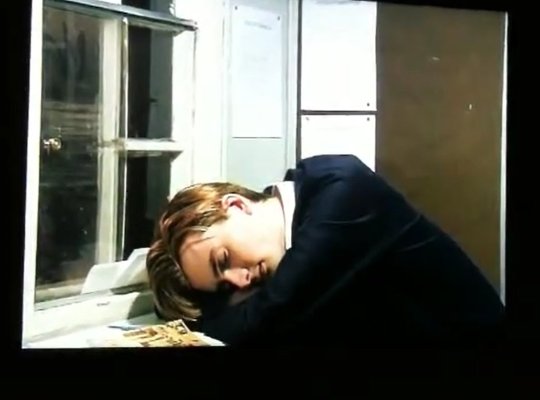
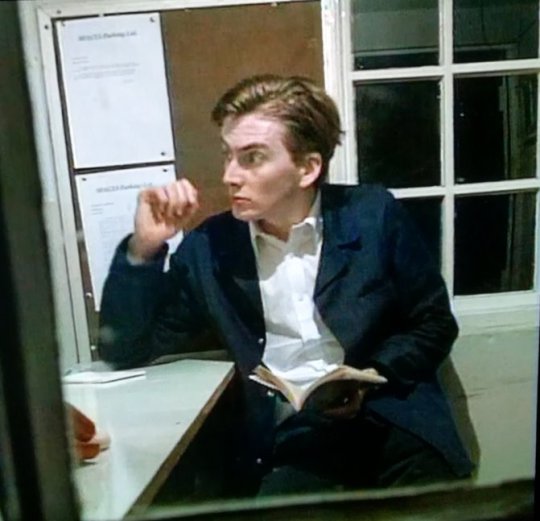

Screenshots from SPACES
Were the actors you chose initially the ones that actually appear in the film? How involved were you in choosing the talent, and how did the actors you chose come to your attention?
We contacted a number of local actors agencies and as I recall the actors in the film were all our first choices for each role. At the time I had no idea who David was or that he was about to become a big star. Looking back, I think he was already making a name for himself as an up-and-coming actor within the industry but as a lowly, newbie film student I didn’t have that ‘inside knowledge’. All I knew was that he seemed remarkably in tune with the character I’d written and came across as incredibly natural in the first audition. The role was his immediately. It was only after the film was completed and submitted that I started hearing comments along the lines of ‘wow you had David Tennant in your short.’
Speaking of actors — David was very young when you worked with him (it’s listed as only his 4th credited role). Was there something that impressed you about this young unknown actor? What about the experience of working with him still stands out for you all these years later?
Working with him – from rehearsal to shoot – was great. We had a tiny budget, a cold, dark location, and it was a night shoot. In hindsight, given that we were a bunch of newbie students and he was about to break through as a major actor, I’m grateful that he was so tolerant of the unsociable hours, the unglamorous location and facilities we had!
I have information that SPACES was shown on television sometime in the latter half of 1993, when Scottish Television ran three half-hour documentaries showing excerpts of the winners from the First Reels. Do you recall if it was shown, and if so, how did you feel seeing your film broadcast?
An excerpt was shown yes, along with a short interview with me. I remember being wracked with nerves on the night of the broadcast and kind of being in shock afterwards. It was probably only a couple of minutes of screen time in total.
Do you have any interesting behind-the-scenes sorts of recollections about working on the short?
I remember our equipment causing a short circuit at the location that required us to completely re-order the schedule. And I think our catering consisted of soup and bread for everyone. It was all very basic.
How do you think working on First Reels influenced you in developing your career?
It was an invaluable boost and a great learning experience. Who knows what would have happened had I not received that grant.
For Further Reference:
View Mr. Pang’s IMDb or his extensive CV.
Synopsis from entry on SPACES from the full film record at the Scottish Screen Archive.
A copy of SPACES is held at the Moving Image Archive and can be viewed at the National Library of Scotland. Private and research viewing only.
--
And that's that! I hope you all enjoyed this unique insight into SPACES and DT's work with Steve Pang!
43 notes
·
View notes
Text
Y'ALL maybe i am the only one who didn't know this but Edinburgh Napier University has digitalised versions of The Hydra up on their website!! for free!!!!
6 notes
·
View notes
Text
The study, by Edinburgh Napier University, also shows an average 4% reduction in collisions with each 1mph reduction in average speeds on rural roads. It found that 85% of drivers dropped their speed by 3mph, with some areas - where higher speeds had been seen in the past - seeing an average reduction of 5.4mph. The trial is the first of its kind to look at the effects of a 20mph limit on such a large, rural area.
The study also found that the change in driver behaviour had a lasting impact, with average speeds still well below previous levels eight months after the start of the trial.
5 notes
·
View notes
Text
Teaching Current Events in the Classroom Through Ecopoetry
Last week, my students spent time viewing weather reports, watching projections and talking about Hurricane Lee. After gauging their interest in the hurricane, I decided to use short lessons that allowed them to steer the conversation. They used their experience with post tropical storm Fiona in 2022 to engage in the daily lessons. Most of my students are not yet 10, but their conversations and insights told me it is an area of interest, or perhaps concern, for them. What can Adora Svitak teach us?
I have always felt it was important to teach current issues in an age appropriate manner. I believe students are curious about their world and want to know more about it. As a parent, I want to shelter my children from some of the harsh realities, but I also know the importance of teaching them the truth. Young educational activist Adora Svitak said:
"By bringing current events into the classroom, everyday discussion, and social media, maybe we don't need to wait for our grandchildren's questions to remind us we should have paid more attention to current events."
Adora Svitak https://www.brainyquote.com/quotes/adora_svitak_594720
Adora Svitak and Paulo Freire: What is the connection?
This young activist reminds me of Paulo Freire. Freire believed that teaching adult learners to read would help them see their own oppression. This knowledge could then transform their lives through action. Teaching current events in the classroom, can do the same. Elizabeth Lange, in her 2023 book Transformative Sustainability Education, stated that Freire’s:
"literacy process was called conscientization as adult learners become conscious of the root causes of their oppression and then took collective action to improve their lives" (Lange, 2023, pg. 76).
This is similar to Svitak's belief that children need to understand current events, so they can begin their work toward change. To learn more about Paulo Freire’s theory of education, watch the following video.
youtube
An informative academic article regarding Freire's transformative learning theory can be found here:
The Ecopoetry Connection
One major current issue that faces children globally is climate change. Extreme weather events, loss of ecosystems, endangered species and species at risk, pollution, environmental disasters or social system failures are all partly the result of climate change. We need look no further than Great Thunberg to see how these issues are affecting children and young adults. Her global climate strike has mobilized millions of students throughout the world. My own students have hosted small rallies outside our school as a way to tell adults they want change. Youth do have the intelligence, willingness and creativity to take action against climate change. Young spoken word poet, Amanda Gorman, gives us a glimpse as to what youth can do:
Black eco-poets, such as Frank X Walter use their experience with oppression and resilience in his poems. Contemporary eco-poets are using their word to teach about environmental impacts to our natural world. Below is Walter's poem Love Letter to the World.
https://www.sierraclub.org/sierra/8-black-eco-poets-who-inspire-us#:~:text=%E2%80%9CEco%2Dpoetics%E2%80%9D%20%20may%20be,finding%20home%20away%20from%20home.
Edinburgh Napier University Professor Sam Illingworth states that ecopoet Elise Paschen, uses her poem The Tree Agreement, to
"promote the idea of the agency people possess in protecting and preserving their local environment. These poems discuss neighborhood resistance to tree felling and challenge our need to make a mark on the world."
Eco-poetry is more than poetry about the environment. It tells a story that is meant to expand the reader's thinking and make connections between humankind and the litany of social issues that surround their lives. As Eleanor Flowerday (2021) states,
“Eco-poetry roots you in your environment both physically but also in the way we tell stories to one another. It provides that line of connection to your surroundings that is so necessary in founding a relationship with the natural world: that feeling that you actually belong there.”
As an educator, I believe eco-poetry has a role to play in helping to transform the global climate crisis. Eco-poetry has a place in every language arts curriculum because the climate crisis effects everyone. The poets, educators and activists discussed in this blog are just a few in the every growing list of climate change activists.
Reference List
https://docs.google.com/document/d/1ImsBe97u3DMtBAbB4hj3N9Rt8ASKcpEYfYP6JJPUhZQ/edit
#ecofriendly#eco conscious#poetry#eco-poetry#environmental#teaching#eco-poetryin theclassroom#radical poetry#paulo freire#adora svatik#naturalistweekly#poetryfoundation#sierraclub#worlwildlife#Youtube
3 notes
·
View notes
Text

Hello, Scotland university and college students! 👋
Are you struggling with your assignments? Do you need professional help to ace your exams? Do you want to save time and money while getting the best grades?
WhatsApp Group Link: CLICK HERE
If you answered yes to any of these questions, then you need Assignment Help Experts UK/USA/CANADA WORLDWIDE! 🙌
We are a team of experienced and proficient tutors who can help you with any academic task. Whether you need assistance with essays, online exams, dissertations, proposals, research papers, creative writing, or any other subject, we have got you covered! 🙌
We have expertise in various disciplines, such as engineering, business, economics, IT, law, psychology, history, philosophy, sociology, and many more. We can solve all assignments of AUS, UK, Canada, Ireland, Germany and USA universities. We know how to score well in all universities. Perfect knowledge of referencing is our key to success. 🚀
We guarantee you:
- 💰 30% discount on your first order
- 💸 100% money back if you are not satisfied
- 🕒 On-time delivery of your work
- 📝 High-quality writing that is plagiarism-free
- 📊 Free Turnitin report to prove originality
- 🔧 Revision facilities to ensure your satisfaction
- 📞 24/7 availability and support
Don't stress over your assignments anymore. Let us handle them for you and deliver the best results. Contact us today by clicking the link below and get a free quote. 😊
Some of the universities and colleges we can help you with are:
- University of Edinburgh
- University of St Andrews
- University of Glasgow
- University of Aberdeen
- University of Dundee
- University of Strathclyde
- Heriot-Watt University
- University of Stirling
- University of the West of Scotland
- Edinburgh Napier University
- Robert Gordon University
- Glasgow Caledonian University
- Queen Margaret University
- Abertay University
- University of the Highlands and Islands
- Royal Conservatoire of Scotland
- Glasgow School of Art
- SRUC Scotland's Rural College
- New College Lanarkshire
- City of Glasgow College
#college#assignment help#a+#essay writing#home tutors#essay#assignmentexperts#assignmentwriting#physics#discussion#scotland#research paper#dissertation#mba#mbacollege#online tutoring
2 notes
·
View notes
Text

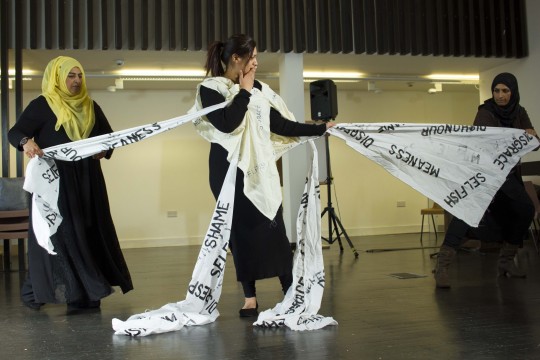



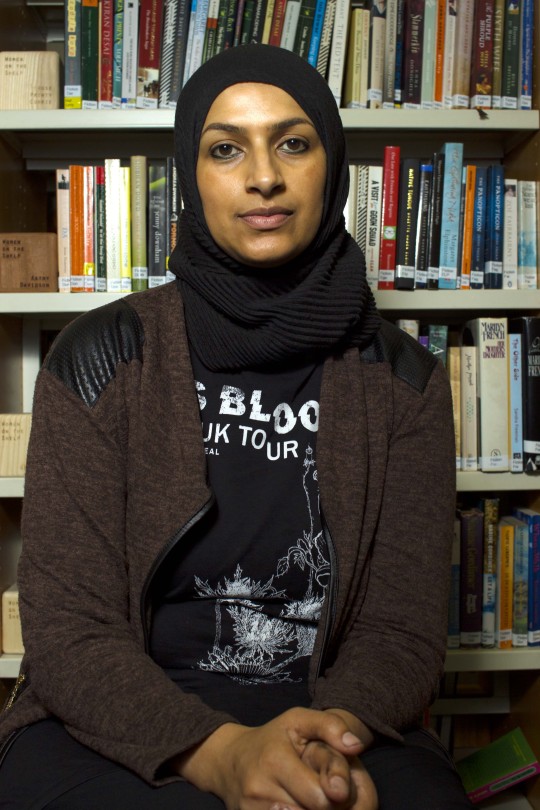

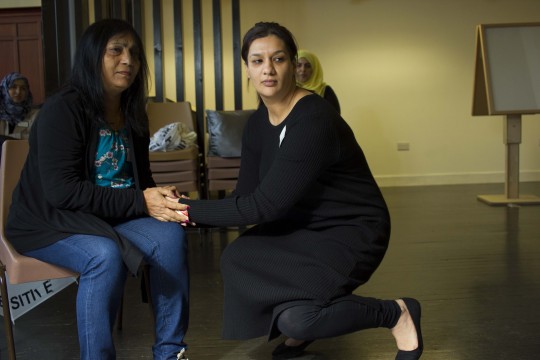
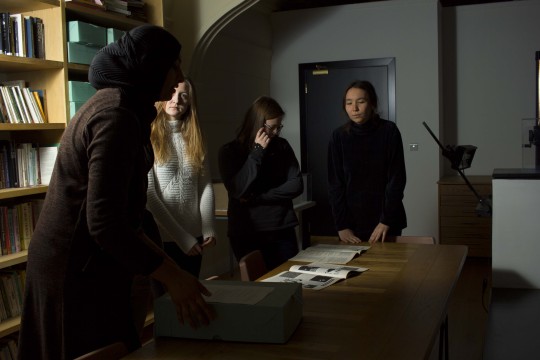
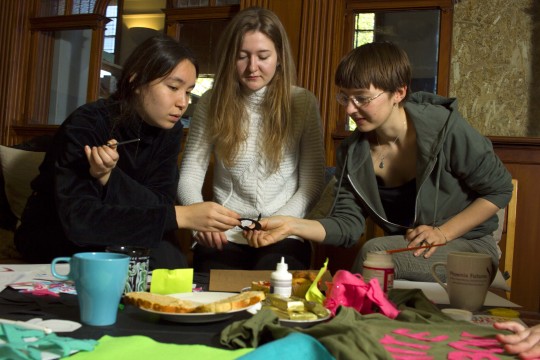
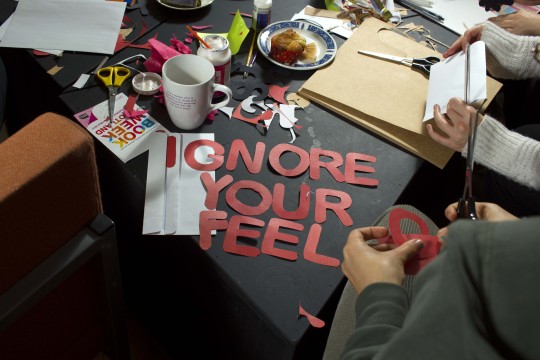
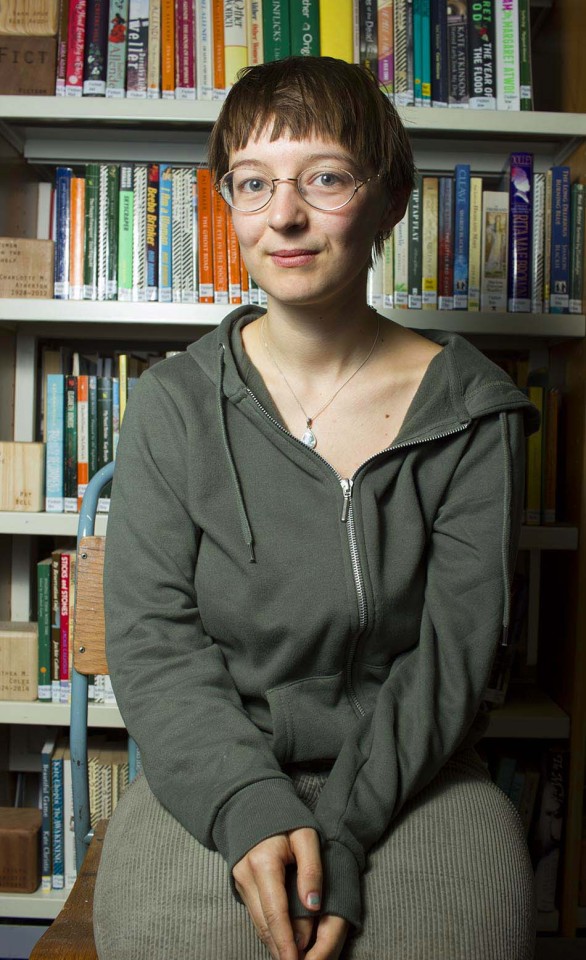
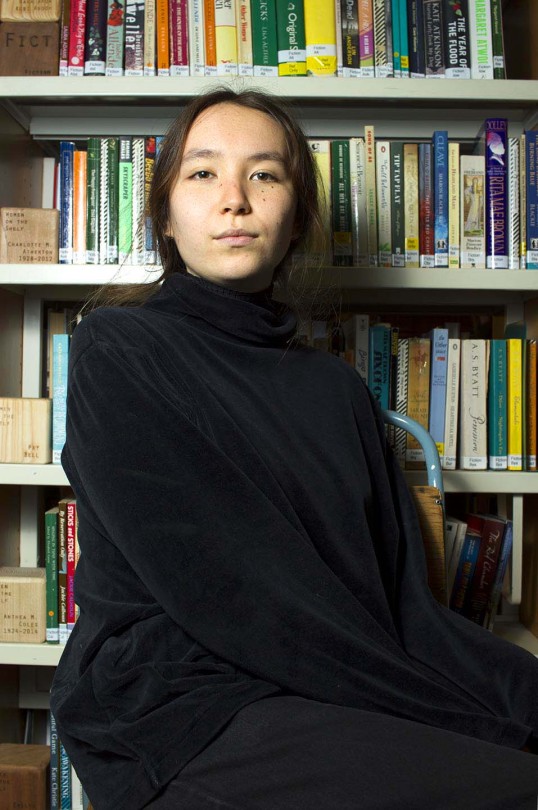


Women Making It - Photo Essay
This series of images was created in late 2017 at the Glasgow Women’s Library (GWL) in Glasgow, Scotland. GWL is the only museum in the UK dedicated entirely to the lives of women. At the time of this shoot I was studying a BA in Photography at Edinburgh Napier University. All of the work I had been producing that year was deeply feminist and asked a lot of questions about societal norms and the needs of women. I connected with GWL to see if I could learn more about their history and what they offer. And request to make a photo series. They had women’s-only art classes called ‘Women Making It’ which still run at present! See this link: https://womenslibrary.org.uk/event/women-making-it-13/2023-08-11/
All the events and classes that they run are made with the intent of being a safe space for women, both in the local community and visiting. The women who attended ‘Women Making It’ were a range of ages coming from different backgrounds. What most of these women had in common was having experienced patriarchal oppression, either at some point in their lives or still ongoing. Some through domestic abuse and others through societal pressure or witnessing the oppression of those close to them. You can see in these images, the women were preparing costumes and props and rehearsing for a play. As well as taking a look in the GWL archives for some inspiration. In this play they would act out true stories of abuse experienced by women in the local community. As a form of community catharsis and solidarity. Many of these women came from traditional Islamic backgrounds and had felt the institutional wrath of shame controlling them. Arranged marriages were common as well as unwanted pregnancies. Domestic abuse and particular cultural narratives and expectations placed on these women. The play explored the emotional wounds of these events as well as touching on coping through substance abuse and experiencing suicidal thoughts.
A few months before beginning this project I had recently got out of a domestic abuse situation with an ex-partner, who I was living with. All the courage it took me to take back life for myself lead me to use my photography, to passionately advocate for other women who have had a similar struggles. I realised that most women in my family had also been extremely oppressed by patriarchy, most to the point of Stockholm syndrome.
Some of the words I heard growing up that shaped my reality, that became my thought patterns that justified me living with domestic abuse:
“The amount of pain that I can bare shows that I am a good person. How I can control myself and put the needs of others first is proof that I’m a good person, a good partner, a good woman.”
“How much I can take is evidence that I’m a strong person”
“When he’s in a good mood he’s great, when he’s in a bad mood he’s terrible” As a certified EFT(Emotional Freedom Techniques) Practitioner, I have an active role in supporting people who have survived trauma. If you feel the call to reach out to me for support please do, you are absolutely so welcome.
All my love,
Claire
#ClaireFarrell#PhotoEssay#photojournalism#photography#Glasgow Women's Library#GWL#Scotland#Emotional Freedom Techniques#Feminism#Feminist art#Feminist Photography#Womens rights
6 notes
·
View notes
Text
12 Best Study Abroad Programs in Scotland This Year
Scotland, also termed as the kingdom of the fairies, is popular worldwide for its beautiful location, historical background, and best universities attracting many foreigners. In their pursuit of academic excellence coupled with thrilling travel, students who wish to study in Scotland have their package deal ready. This blog also lists the top 12 study abroad programs in Scotland for this year designed for international students who want to get the most academic and cultural experience from the visit.
1. University of Edinburgh: Global Studies Program
The educational establishment of the University of Edinburgh which is known all over the globe provides an outstanding Global Studies Program. The focus of this academic interdisciplinary is preeminently global with a concentration on such problems as sustainability, international relations, and multiculturalism.
Why Choose This Program?
Availability of great tapes of faculty and other resources.
These include; Internships and field work opportunities in other countries.
Founded in the cultural and lively city of Edinburgh.
2. University of Glasgow: Business and Management Studies
The University of Glasgow is renowned for its strong emphasis on research and innovation. Its Business and Management Studies program is designed for future leaders in global commerce.
Why Choose This Program?
High employability rates for graduates.
Strong links with multinational companies.
Stunning campus blending history and modernity.
3. University of St Andrews: Marine Biology Program
For students passionate about marine life, the University of St Andrews offers a top-rated Marine Biology program. Located by the North Sea, it provides hands-on learning opportunities.
Why Choose This Program?
Research-oriented curriculum.
Field trips to marine reserves and labs.
Renowned faculty in marine sciences.
4. University of Strathclyde: Engineering and Technology
Known as the "Place of Useful Learning," the University of Strathclyde in Glasgow excels in Engineering and Technology programs. It’s ideal for students aiming for innovative careers.
Why Choose This Program?
Access to state-of-the-art labs and facilities.
Strong industry partnerships for internships.
Multicultural student community.
5. Heriot-Watt University: Petroleum Engineering
Heriot-Watt University is globally recognized for its expertise in Petroleum Engineering. This program prepares students for roles in energy and environmental sectors.
Why Choose This Program?
Global campus network and collaboration.
High-tech research facilities.
Strong ties to the energy industry.
6. University of Dundee: Biomedical Sciences
The Biomedical Sciences degree program at the University of Dundee will benefit students who have an interest in medical research and health care systems.
Why Choose This Program?
The opportunities related to the most advanced research in life sciences.
The occasions to interact with great scientists.
Situates in the learning city.
7. University of Stirling: Environmental Science and Sustainability
Since its campus is located in the midst of the stunning landscapes of Stirling, Scotland, the University of Stirling has a lot to offer to Environmental Science students and one of its key principles is sustainability.
Why Choose This Program?
Emphasis on real-world applications.
Opportunities for outdoor fieldwork.
Vibrant student life in a scenic location.
8. Edinburgh Napier University: Creative Industries and Media
Edinburgh Napier University specializes in programs related to Creative Industries and Media, making it ideal for aspiring filmmakers, journalists, and designers.
Why Choose This Program?
Strong focus on practical skills and internships.
Partnerships with leading media companies.
Located in Edinburgh, a UNESCO City of Literature.
9. Glasgow Caledonian University: Public Health
For students pursuing a career in public health, Glasgow Caledonian University provides a comprehensive program focusing on global health challenges.
Why Choose This Program?
Diverse and inclusive learning environment.
Opportunities for community engagement projects.
A focus on addressing global health inequalities.
10. Robert Gordon University: Digital Marketing and Analytics
Robert Gordon University in Aberdeen is known for its forward-thinking approach. Its Digital Marketing and Analytics program equips students with modern skills in a growing field.
Why Choose This Program?
Industry-relevant curriculum.
Collaboration with leading tech firms.
High employability rate among graduates.
11. Queen Margaret University: Tourism and Hospitality Management
With Scotland being a top tourist destination, Queen Margaret University offers a specialized Tourism and Hospitality Management program.
Why Choose This Program?
Focus on sustainable tourism practices.
Strong industry connections for internships.
Proximity to Edinburgh’s thriving tourism industry.
12. The Glasgow School of Art: Fine Arts and Design
For those with a creative flair, The Glasgow School of Art provides exceptional programs in Fine Arts and Design, blending traditional techniques with modern trends.
Why Choose This Program?
World-class reputation for art and design education.
Inspiring artistic community.
Opportunities for exhibitions and collaborations.
Why Study in Scotland?
1. Academic Excellence
Scottish universities are globally recognized for their high academic standards, offering diverse programs tailored to meet industry demands.
2. Cultural Heritage
From medieval castles to modern festivals, Scotland’s rich cultural tapestry provides an enriching backdrop for international students.
3. Welcoming Environment
Scottish people are known for their friendliness, making it easier for international students to adapt and feel at home.
4. Work Opportunities
Scotland offers post-study work opportunities through the Graduate Route visa, allowing students to gain valuable experience in the UK job market.
5. Scholarships for International Students
Generous scholarships, such as the Saltire Scholarships, make education in Scotland accessible to students worldwide.
Tips for Choosing a Study Abroad Program in Scotland
Identify Your Goals: Choose a program aligned with your career aspirations.
Research Universities: Look for rankings, faculty expertise, and facilities.
Check Admission Requirements: Ensure you meet the academic and language criteria.
Explore Scholarships: Reduce financial burdens by applying for available scholarships.
Understand the Location: Consider the city or town where the university is based for lifestyle compatibility.
Scotland continues to captivate international students with its unique blend of academic excellence, cultural richness, and picturesque landscapes. The programs listed above represent just a fraction of the opportunities available, ensuring that every student can find a course suited to their interests and goals. Whether you aim for a career in technology, business, arts, or sciences, Scotland offers a world-class education to set you on the path to success.
Are you looking for the best study abroad consultants in Kochi
#study abroad#study in uk#study in australia#study abroad consultants#study in germany#study in ireland#study blog
0 notes
Text
Affordable Universities in Scotland for International Students: Study in Budget-Friendly Institutions
Scotland has long been a favored destination for international students, offering a blend of academic excellence and cultural richness. But one common concern for students worldwide is affordability. In this guide, we’ll explore some of the most budget-friendly universities in Scotland and share tips on how to manage costs effectively. Whether you’re looking for tuition fee discounts, scholarships, or economical living options, Scotland has something for everyone.
For a complete guide on top universities in Scotland, check out this comprehensive resource: best universities in Scotland for international students.
Why Scotland is a Great Choice for Affordable Education
Scotland is not only home to some of the world’s most prestigious institutions, but it also offers various options for students seeking affordable education. Here’s why Scotland stands out:
Affordable Tuition Fees: Many Scottish universities are more budget-friendly compared to universities in England or other popular destinations like the USA.
Scholarships for International Students: A wide range of financial aid programs are available.
Part-Time Job Opportunities: Scotland allows students to work part-time while studying, helping them offset living expenses.
Top Affordable Universities in Scotland
Here’s a look at some of the most affordable universities in Scotland for international students.
1. University of the West of Scotland (UWS)

The University of the West of Scotland is known for offering quality education at relatively lower tuition fees. UWS provides several programs in business, engineering, and creative industries.
Average Annual Tuition Fees: £12,000–£15,000
Scholarships Available: UWS Global Scholarship
2. Abertay University

Abertay University in Dundee is another cost-effective option, especially for those interested in computer gaming, cybersecurity, and environmental science.
Average Annual Tuition Fees: £14,000–£16,000
Notable Programs: Game Design, Computer Science
3. Glasgow Caledonian University (GCU)
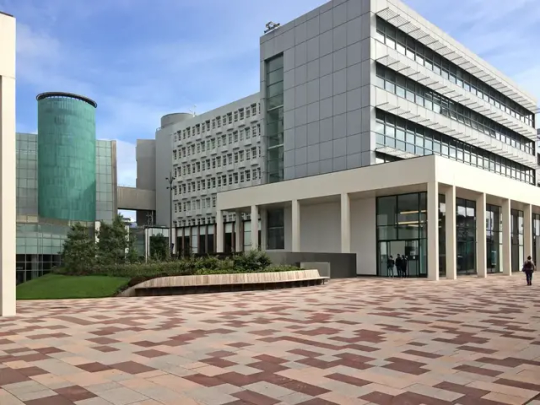
GCU combines affordability with a focus on sustainability and innovation. Known as "The University for the Common Good," it offers affordable programs in business, health, and technology.
Average Annual Tuition Fees: £13,000–£15,500
Scholarships: The GCU International Scholarship covers part of tuition fees.
4. Edinburgh Napier University

Located in Scotland’s capital, Edinburgh Napier University provides excellent courses with moderate tuition fees. It’s particularly popular among students seeking practical, career-focused education.
Average Annual Tuition Fees: £13,000–£16,000
Scholarships: Merit-based scholarships for international students.
5. University of Stirling

Known for its beautiful campus, the University of Stirling offers competitive tuition fees and a range of scholarships. It’s a great option for students pursuing psychology, media, and environmental studies.
Average Annual Tuition Fees: £13,650–£15,600
Scholarships: Commonwealth Shared Scholarships, International Undergraduate Scholarship
Tips to Manage Costs as an International Student
Studying in Scotland doesn’t have to break the bank. Here are some practical tips to help you stay within budget:
1. Apply for Scholarships and Grants
Most universities in Scotland offer scholarships exclusively for international students. Research and apply early to increase your chances of receiving financial aid.
2. Opt for Shared Accommodation
Instead of living alone, consider sharing accommodation with fellow students. Shared housing significantly reduces rental expenses.
3. Cook at Home
Dining out can add up quickly. Cooking your meals at home can save a significant amount of money.
4. Use Student Discounts
Scotland offers plenty of student discounts on public transport, restaurants, and entertainment. Always carry your student ID.
5. Take Advantage of Part-Time Jobs
Scotland allows international students to work up to 20 hours per week during the term and full-time during holidays. This is a great way to earn some extra cash.
Final Thoughts
Scotland is not only a land of academic excellence but also a destination where affordability meets quality. By choosing one of the affordable universities listed above and managing your expenses wisely, you can make your dream of studying in Scotland a reality.
For a broader perspective on the best universities in Scotland and what they have to offer, visit this resource: best universities in Scotland for international students.
With a little planning, you can enjoy the rich educational opportunities and cultural experiences Scotland has to offer without breaking the bank. Start your journey today!
#Affordable Study Options in Scotland#Best Universities in Scotland for International Students#Budget-Friendly Universities in Scotland#Scholarships for International Students in Scotland#Cost-Effective Study in Scotland
0 notes
Text
NOTICE
Published 15 November 2024 Buckie Got It St. Kitts and Nevis News Source FOR IMMEDIATE RELEASE The Ministry of Education announces that Edinburgh Napier University will hold an information session at the CUNA Conference Centre on Wednesday, 20th November from 6.30-8pm. This session will make clear the range of 100% online programmes offered by Edinburgh Napier University in the Caribbean…
0 notes
Text
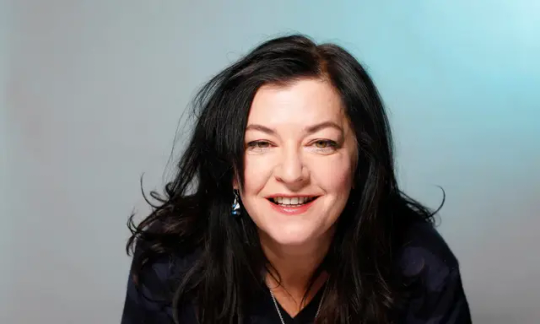




Happy Birthday super talented Scottish film director and writer Lynne Ramsay.
Born in Glasgow on 5th December 1969, Ramsay studied photography at Napier College, Edinburgh. In 1995, she graduated from the National Film and Television School in Beaconsfield, England, where she specialised in cinematography and direction.
After cutting her teeth on several shorts, Ramsay wrote and directed the film Ratcatcher in 1999, starring Tommy Flanagan, it’s a gritty film set in early 70’s Glasgow, it is really worth a watch, it tells the story of a wee laddie affected by his part in the drowning of another, it’s a bleak film but captures Glasgow at a time when the tenements started to be emptied for schemes that went up on the outskirts. Another fab film by Lynne Ramsay is Morvern Callar, based on the excellent Alan Warner novel set in Oban.
Lynne Ramsay’s last feature film was a decent effort You Were Never Really Here, starring Joaquin Phoenix as a man who tracks down missing girls for a living, it gets 6.8/10 on IMDb and is well worth a watch and it received a seven-minute standing ovation at Cannes, you will find it on Amazon Prime. In 2019 she made a short documentary called Brigitte, it’s framed round a candid conversation between the photographer Brigitte Lacombe and the film maker discussing their process and fascination with images as well as Brigitte's close relationship to her sister Marian Lacombe. The film has had a couple of good reviews and rated 6.9 on IMDB.
Ramsay is considered one of the British most original and exciting voices working in Independent cinema today, she was awarded an honorary doctorate by the University of Edinburgh for her contribution to Scottish film in 2013.
Lynne is far from being a prolific filmmaker, but she admits to being a perfectionist, better to be that than to churn out film after film at the behest of Hollywood. She said in an interview she has a script under her belt and is seeking backers to make it, but has given nothing away to the content.
Lynne has 3 projects on the go at the moment all in Post Production. Polaris,set in Alaska during the 1890s, an ice photographer meets the devil is the most eye catching and Joaquin Phoenix again is the lead actor.
10 notes
·
View notes
Text
An in-depth look at David Tennant's 1993 short film, 'SPACES'
I'm back!
Today's David Tennant post will stick with my trend of covering David's roles in his harder-to-find short films. Before 1997's short Bite (covered in my last post) and 2001's One-Eyed Jacques (covered a few posts back), David played the lead role in the 1993 short film SPACES.
SPACES got made because of a Scottish joint short film initiative called First Reels. First Reels - funded by Scottish Screen/Scottish Film Council and STV - was launched in 1991 to provide grants for young and first-time filmmakers to complete their first film or video project.
With a running time of 14:54, SPACES was written and directed by Steve Pang and produced by Pang, Jo Roberts, and Stray Dog Film Company. SPACES starred David as Vinny, Colin Brown as Duncan, Becky Baxter as Jane, Mike Gibbin as the Kilted Drunk, and Daniel Byrne as the Homeless Boy.
When the First Reels project was announced, Pang was studying at Edinburgh's Napier University. He submitted a script - and won the grant. When I spoke with him, Pang told me winning the grant helped provide the funds to make SPACES a reality, in the way he wanted it made. "Had we not won the grant," he said, "I think the film would have still gone ahead in some form, but we would not have been able to pay the cast or equipment suppliers – which would have undoubtedly had a detrimental effect on the film, in my opinion."
In the following years Pang decided to shift gears and move into film and television editing. He began in film as an assistant editor in the 1997 James Bond film Tomorrow Never Dies and on television in 1997-1998’s The Vicar of Dibley. Since then he's worked in various editing capacities on a lengthy list of projects including Band of Brothers, The Da Vinci Code, Lord of the Rings: The Return of the King, The Hitchhiker’s Guide to the Galaxy, The 10th Kingdom, and Gravity.
Initiatives like First Reels (and Prime Cuts, which funded six 5-min film dramas annually and helped fund the production of Bite) allowed creators the funds to produce incredible pieces of art that would have otherwise never been made.
And bless them for it! The years these kinds of initiatives were active also happened to be some of the first professional ones of David's career since graduating in 1991 from the Royal Scottish Academy of Music and Drama (now the Royal Conservatoire of Scotland). The fact these initiatives were both available and encouraged certainly gave us David Tennant fans more early opportunities to see him on film!
IMDb describes the short as "a young man's night shift in a car park in Edinburgh and the characters he meets over the course of the night: an older colleague with a troubled past, a bright young girl who uses the empty car park for her violin practice, and a young homeless boy." David's character, Vinny, is challenged with a difficult situation and must rise to the occasion to face it.
Pang told me his goal was to "keep things simple", and he came up with an idea to collate all his experiences working part time in a 24-hr car park into a single night. He settled upon an idea that could be shot in one location, and with a small cast.
About David, Pang told me that he was his first choice for the lead role of Vinny in the film. He said DT seemed remarkably in tune with the character he had written, and came across as incredibly natural in the first audition. The role was his immediately. "We contacted a number of local actors’ agencies and as I recall, the actors in the film were all our first choices for each role," Pang told me. "Working with him from rehearsal to shoot was great. We had a tiny budget, a cold dark location, and a night shoot. I remember once our equipment caused a short circuit at the location which required us to completely re-order the schedule. I think our catering consisted of soup and bread for everyone? It was all very basic."
That's it for SPACES. If you want to see it you can- it's available for onsite viewing only at the Moving Image Archive in Glasgow. If you're near there go reserve a viewing. Oh. and here's a screenshot of the film taken from the record for SPACES at the Moving Image Archive website:
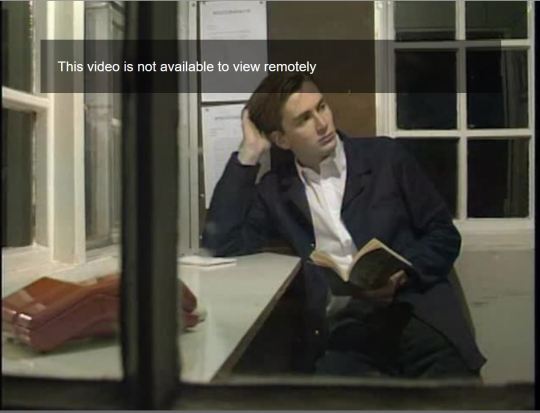
And here are all the other screenshots I've gathered up from the film:
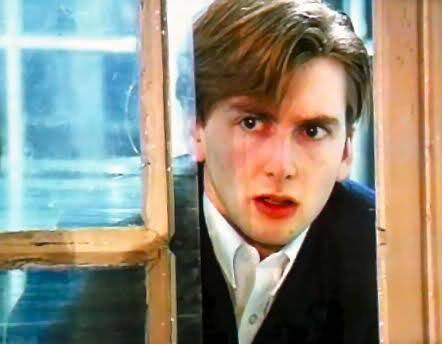


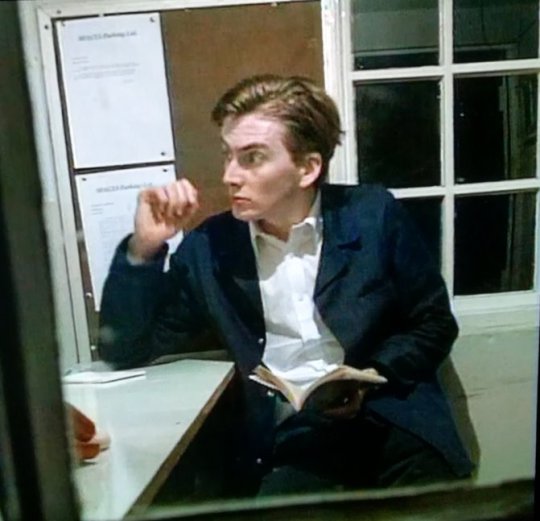
20 notes
·
View notes
Text
Make Some Noise: Games Companies Invited to Creative SoundLAB - September 2024
The Creative Soundlab September 2024 event from Opera.Agency brings together creators from audio, animation, games, film and other areas.
The excellent Opera.agency is gearing up for its Creative SoundLAB September 2024 event, a unique opportunity for games developers, animators, film-makers and other creators to connect with top audio talent and elevate the soundscapes of their projects. Network with the Best in Audio: The event will be held at Edinburgh Napier University’s Bright Red Triangle Startup Studio on Monday, September…
0 notes
Text
12 Best Study Abroad Programs in Scotland This Year
Scotland, also termed as the kingdom of the fairies, is popular worldwide for its beautiful location, historical background, and best universities attracting many foreigners. In their pursuit of academic excellence coupled with thrilling travel, students who wish to study in Scotland have their package deal ready. This blog also lists the top 12 study abroad programs in Scotland for this year designed for international students who want to get the most academic and cultural experience from the visit.
1. University of Edinburgh: Global Studies Program
The educational establishment of the University of Edinburgh which is known all over the globe provides an outstanding Global Studies Program. The focus of this academic interdisciplinary is preeminently global with a concentration on such problems as sustainability, international relations, and multiculturalism.
Why Choose This Program?
Availability of great tapes of faculty and other resources.
These include; Internships and field work opportunities in other countries.
Founded in the cultural and lively city of Edinburgh.
2. University of Glasgow: Business and Management Studies
The University of Glasgow is renowned for its strong emphasis on research and innovation. Its Business and Management Studies program is designed for future leaders in global commerce.
Why Choose This Program?
High employability rates for graduates.
Strong links with multinational companies.
Stunning campus blending history and modernity.
3. University of St Andrews: Marine Biology Program
For students passionate about marine life, the University of St Andrews offers a top-rated Marine Biology program. Located by the North Sea, it provides hands-on learning opportunities.
Why Choose This Program?
Research-oriented curriculum.
Field trips to marine reserves and labs.
Renowned faculty in marine sciences.
4. University of Strathclyde: Engineering and Technology
Known as the "Place of Useful Learning," the University of Strathclyde in Glasgow excels in Engineering and Technology programs. It’s ideal for students aiming for innovative careers.
Why Choose This Program?
Access to state-of-the-art labs and facilities.
Strong industry partnerships for internships.
Multicultural student community.
5. Heriot-Watt University: Petroleum Engineering
Heriot-Watt University is globally recognized for its expertise in Petroleum Engineering. This program prepares students for roles in energy and environmental sectors.
Why Choose This Program?
Global campus network and collaboration.
High-tech research facilities.
Strong ties to the energy industry.
6. University of Dundee: Biomedical Sciences
The Biomedical Sciences degree program at the University of Dundee will benefit students who have an interest in medical research and health care systems.
Why Choose This Program?
The opportunities related to the most advanced research in life sciences.
The occasions to interact with great scientists.
Situates in the learning city.
7. University of Stirling: Environmental Science and Sustainability
Since its campus is located in the stunning landscapes of Stirling, Scotland, the University of Stirling has a lot to offer to Environmental Science students and one of its key principles is sustainability.
Why Choose This Program?
Emphasis on real-world applications.
Opportunities for outdoor fieldwork.
Vibrant student life in a scenic location.
8. Edinburgh Napier University: Creative Industries and Media
Edinburgh Napier University specializes in programs related to Creative Industries and Media, making it ideal for aspiring filmmakers, journalists, and designers.
Why Choose This Program?
Strong focus on practical skills and internships.
Partnerships with leading media companies.
Located in Edinburgh, a UNESCO City of Literature.
9. Glasgow Caledonian University: Public Health
For students pursuing a career in public health, Glasgow Caledonian University provides a comprehensive program focusing on global health challenges.
Why Choose This Program?
Diverse and inclusive learning environment.
Opportunities for community engagement projects.
A focus on addressing global health inequalities.
10. Robert Gordon University: Digital Marketing and Analytics
Robert Gordon University in Aberdeen is known for its forward-thinking approach. Its Digital Marketing and Analytics program equips students with modern skills in a growing field.
Why Choose This Program?
Industry-relevant curriculum.
Collaboration with leading tech firms.
High employability rate among graduates.
11. Queen Margaret University: Tourism and Hospitality Management
With Scotland being a top tourist destination, Queen Margaret University offers a specialized Tourism and Hospitality Management program.
Why Choose This Program?
Focus on sustainable tourism practices.
Strong industry connections for internships.
Proximity to Edinburgh’s thriving tourism industry.
12. The Glasgow School of Art: Fine Arts and Design
For those with a creative flair, The Glasgow School of Art provides exceptional programs in Fine Arts and Design, blending traditional techniques with modern trends.
Why Choose This Program?
World-class reputation for art and design education.
Inspiring artistic community.
Opportunities for exhibitions and collaborations.
Why Study in Scotland?
1. Academic Excellence
Scottish universities are globally recognized for their high academic standards, offering diverse programs tailored to meet industry demands.
2. Cultural Heritage
From medieval castles to modern festivals, Scotland’s rich cultural tapestry provides an enriching backdrop for international students.
3. Welcoming Environment
Scottish people are known for their friendliness, making it easier for international students to adapt and feel at home.
4. Work Opportunities
Scotland offers post-study work opportunities through the Graduate Route visa, allowing students to gain valuable experience in the UK job market.
5. Scholarships for International Students
Generous scholarships, such as the Saltire Scholarships, make education in Scotland accessible to students worldwide.
Tips for Choosing a Study Abroad Program in Scotland
Identify Your Goals: Choose a program aligned with your career aspirations.
Research Universities: Look for rankings, faculty expertise, and facilities.
Check Admission Requirements: Ensure you meet the academic and language criteria.
Explore Scholarships: Reduce financial burdens by applying for available scholarships.
Understand the Location: Consider the city or town where the university is based for lifestyle compatibility.
Scotland continues to captivate international students with its unique blend of academic excellence, cultural richness, and picturesque landscapes. The programs listed above represent just a fraction of the opportunities available, ensuring that every student can find a course suited to their interests and goals. Whether you aim for a career in technology, business, arts, or sciences, Scotland offers a world-class education to set you on the path to success.
Are you looking for the best study abroad consultants in Kochi
#study abroad#study in australia#study in uk#study abroad consultants#study in germany#study in ireland#study blog
0 notes
Text
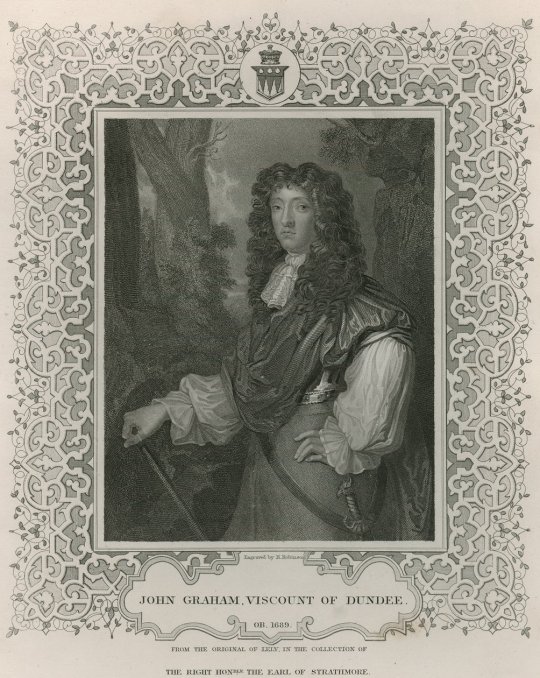
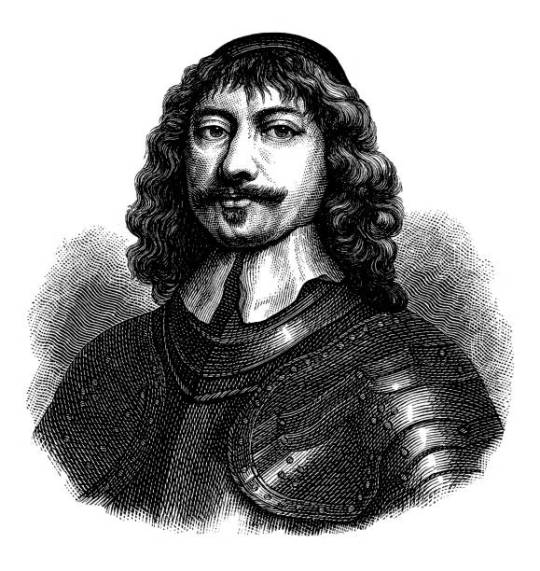
James Graham, 1st Marquess of Montrose was born on October 25th 1612.
I'm lying, Graham's birth date is unknown, it is thought he was born in mid to late October, but a couple of sources give this date, he was educated in Glasgow when he was about 12 before before attending the University of St Andrews at 15.
Initially James Graham took up arms against his King and signed the National Covenant in protest of the introduction of the new prayer book which was seen as a vehicle for introducing Anglicanism to Scotland.
Montrose's loyalties began to waver when he suspected that Archibald Campbell, Earl of Argyll, wanted not just to defend the Kirk, but overthrow the authority of Charles Stuart. Although a sincere Calvinist, Montrose was unable to countenance disloyalty, and he broke with the Covenanters in 1641. In 1642 Graham raised a Royalist army in Scotland to regain the country for Charles and pin down Covenanter troops in their home country.
If you follow my posts you will have read about his exploits on the battlefield in 1644/45, victories at Tippermuir, Aberdeen, (Justice Mills), Inverlochy, Auldearn, Alford and Kilsyth. Of course it wasn't all victories, the slaughter at Philiphaugh in September 1645 he spent the next year on the run employing guerrilla warfare.tactics without making any gains, King Charles , now a prisoner of Cromwell's army, order Graham to lay down his arms. During his years in charge of Charles I army in Scotland not once did Montrose retaliate against his Covenant prisoners, but he was a wanted man and fled to the continent spending three years travelling through Germany, Poland and Scandinavia trying to gain allies and troops to take up arms once more.
After the execution of Charles I in January 1649 he was given the nominal role of Lieutenant of Scotland by Charles II who himself was still in exile
In March 1650 Graham returned to Scotland to avenge his King's death, landing in Orkney and meeting with some German and Danish mercenaries that he had sent beforehand, he was joined by George Hay, 3rd Earl of Kinnoull. Crossing to the mainland, he tried in vain to raise the clans, and on 27 April was surprised and routed at the Battle of Carbisdale by Archibald Campbell, 1st Marquess of Argyll and a grouping of radical Covenanters, known as the Kirk Party. Graham escaped the battlefield and asked for refuge at Ardvreck Castle, Neil MacLeod, laird of Assynt is thought to have been an ally and served with the Royalist army during the previous campaign, he however was not present when they called ,his wife, Christian Monro, daughter of Monro of Lemlair who had fought on the opposite side at Carbisdale. Montrose was confined in the vaulted cellars of the castle.
Montrose was taken to Edinburgh and led through the streets in a cart driven by the hangman. Already under sentence of death for his campaign of 1644-5, Montrose was hanged at the Mercat Cross on 21 May 1650, protesting to the last that he was a true Covenanter as well as a loyal subject.
Montrose's head was fixed on a spike at the Tolbooth in Edinburgh, his legs and arms were fixed to the gates of Stirling, Glasgow, Perth and Aberdeen. His dismembered body was buried in Edinburgh, but Lady Jean Napier had it secretly disinterred. The heart was removed, embalmed, placed in a casket, and sent to Montrose's exiled son as a symbol of loyalty and martyrdom. After the Restoration, Montrose's embalmed heart and bones were buried at the High Kirk of St Giles in Edinburgh in an elaborate ceremony with fourteen noblemen bearing the coffin.
Probably the best place to read a bit more about James Graham is the website here that bares his name https://www.firstmarquisofmontrosesociety.co.uk/
9 notes
·
View notes